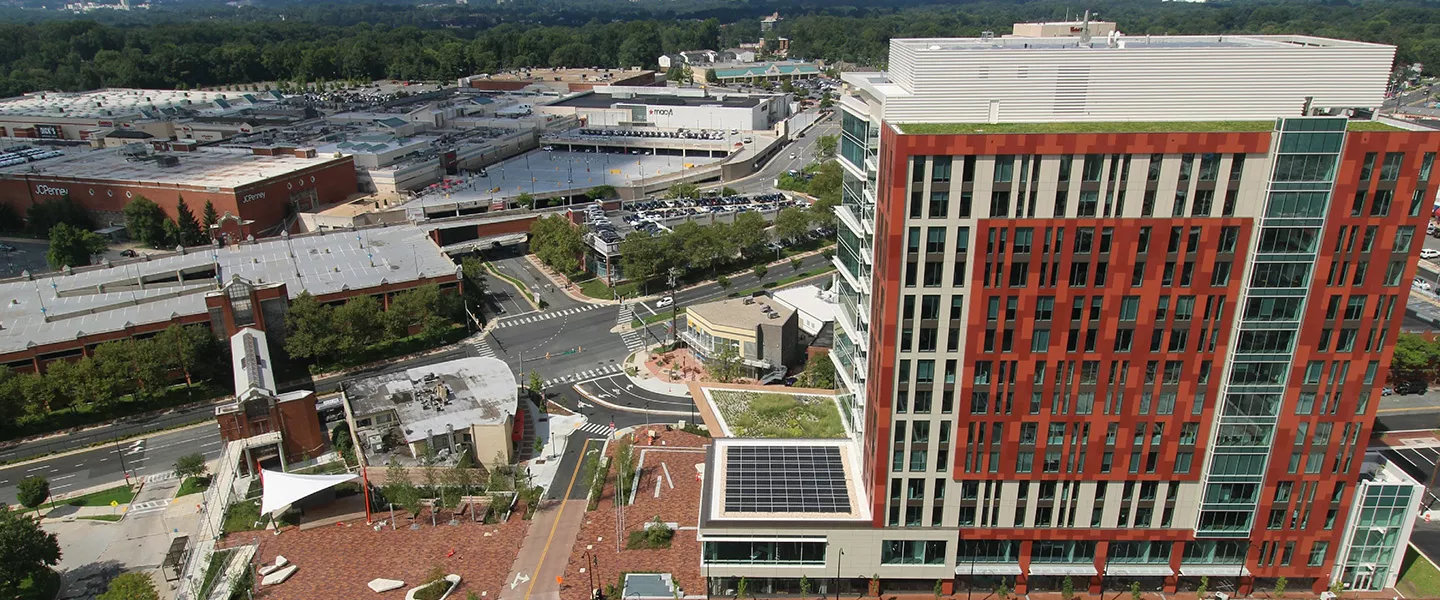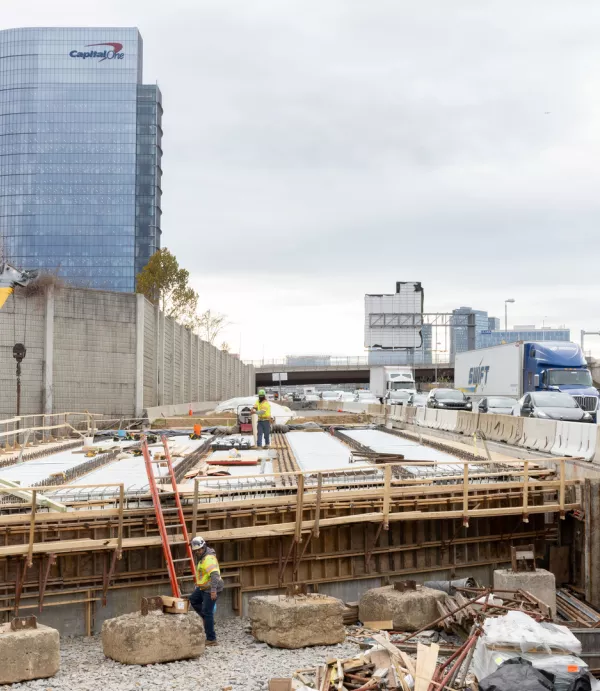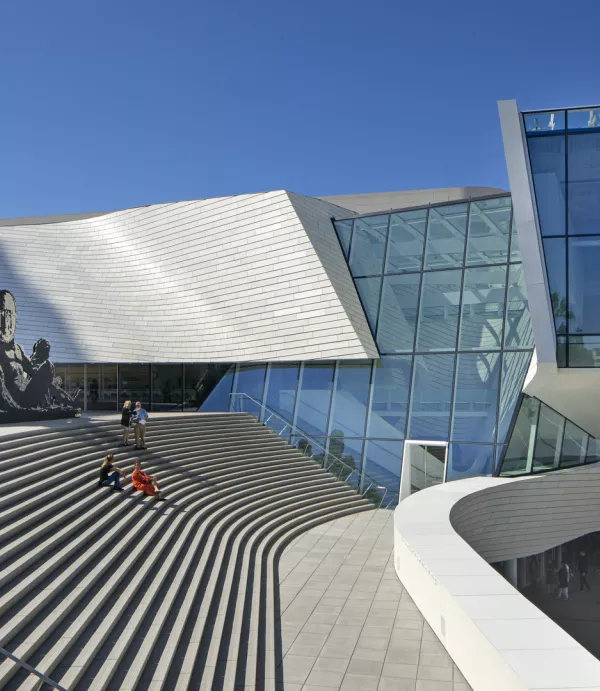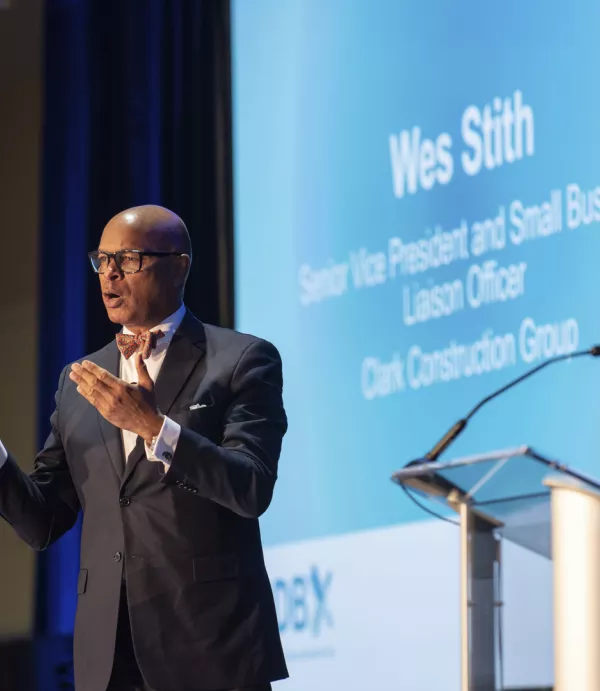Clark Delivers Montgomery County’s Vision for a Better Environmental Future
October 21, 2020

Montgomery County, Maryland, is leading the forefront of sustainability for counties across the nation with its public commitment to reduce greenhouse gas emissions by 80% by 2027 and eliminate carbon emissions entirely by 2035.
The recently-delivered Wheaton Revitalization project, a transformative 308,000-square-foot, 14-story government office building with first-floor retail space and a 25,000-square-foot public plaza, is a testament to the county's commitment to sustainability. Part of developer StonebridgeCarras’ multi-phase, public-private initiative that is reshaping Wheaton's central business district, the project endeavors to improve mobility, diminish negative environmental impacts, reduce traffic congestion, and increase the diversity of employment opportunities and services in the area.
The building, designed to achieve LEED Platinum certification, will be the new home to the Maryland-National Capital Park and Planning Commission and six other county entities, including Environmental Protection, Health and Human Services, Permitting Services, and Recreation. For these municipal offices, green energy is integral to their long-term plans for the county and therefore paramount in the design and construction of their new workspace.
The mixed-use development sits atop a complex geothermal system that uses the earth’s natural temperature to, depending on the season, heat or cool the water running through it, significantly reducing energy use throughout the lifecycle of the building. The project is Clark’s second to feature this cutting-edge advancement in energy efficiency. Increasing the complexity of the system’s installation was its physical location. Typically, the geothermal lattice lies below a large field and requires significant open acreage nearby. But the urban location of the project left no space for the geothermal system except directly beneath the building, adding increased complexity and challenges for the project team during installation. Wheaton’s geothermal field is contained entirely within the footprint of the site – only the second development in the Mid-Atlantic region to achieve this feat.
Above ground, the project is chock full of features that further enhance heating and cooling efficiency. The building’s façade combines high-performance concrete and metal panels with a curtainwall glazing system to more efficiently retain air within the interiors. Two green roofs provide added insulation for better energy management and mitigation of low urban air quality. Bio-retention boxes planted with native and adaptive plants reduce rainwater load on the storm drain system by providing larger spaces for rainwater to collect, which is then used by the plants.
Upon entering the office, employees and visitors are greeted by a massive green wall of living flora that naturally filter the air and reduce breathable air toxins. All appliances and utilities, from the toilets to faucets, are Energy Star Compliant and operate on the lowest amounts of water possible. Water is also consistently recycled and reused throughout the building’s interiors, including its heating, plumbing, and irrigation systems.
Kirby O’Connell, a Clark project engineer on the team, reflected on the project, saying, “Working on this project has not only been professionally rewarding – I’ve gotten to oversee the start-to-finish lifecycle of sustainability features that will likely become standard practices in a more eco-conscious future – but is also a significant source of personal pride as a Montgomery County resident.”


